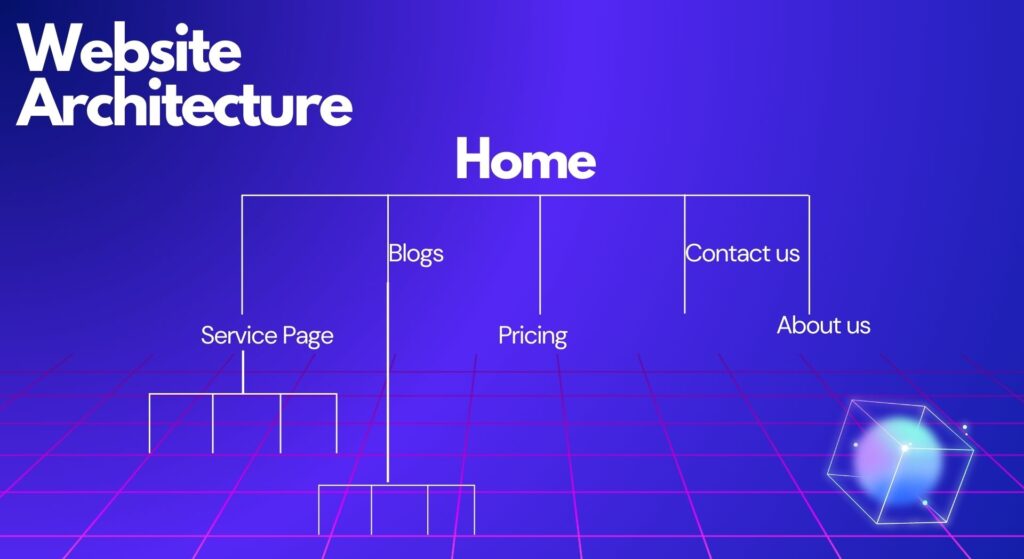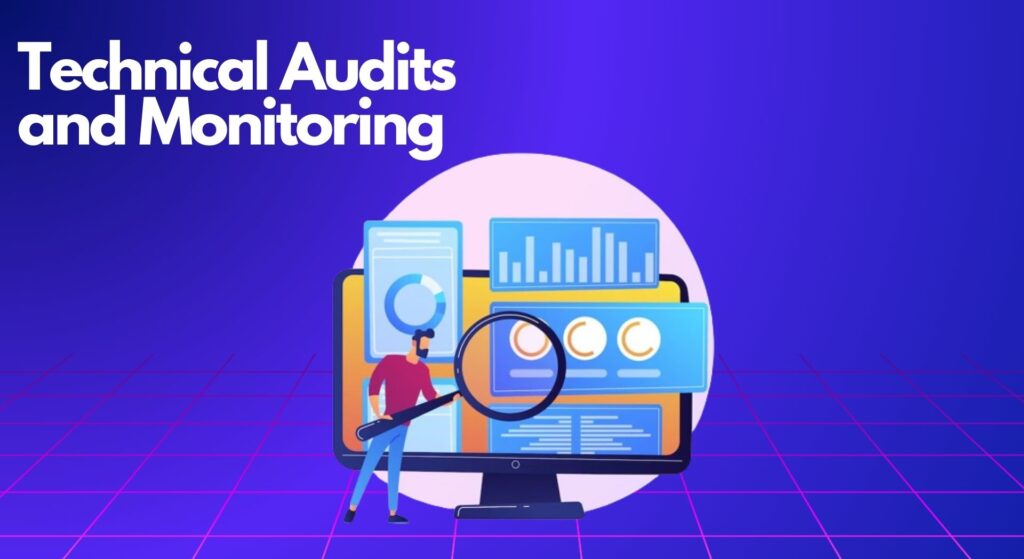What is Technical SEO?
Have you ever wondered why some websites seem to magically rank better than others, even with similar content? The secret sauce lies in technical SEO – the foundation that ensures your website is optimized for search engines to crawl, index, and understand your content.
It’s the behind-the-scenes work that makes your site search engine friendly and sets the stage for successful on-page and off-page SEO efforts.
Why Technical SEO Matters
Making websites work well with search engines through technical methods may not be the most exciting part of search engine optimization, but neglecting it can lead to major problems.
Without proper technical SEO in place, even the most well-crafted content and link-building strategies may fall flat.
Search engines like Google prioritize websites that are technically sound, fast, and user-friendly.
We’ll be navigating through various components of Technical SEO, from website structure to server optimization.
So, let’s get started.
Website Architecture

Site Structure
Your website’s architecture is the foundation upon which everything else is built. A well-planned site structure ensures that your content is logically organized, easy to navigate, and accessible to both users and search engines.
This includes factors like your website’s hierarchy, the use of categories and subcategories, and the overall flow of information.
For example, an e-commerce website might have a top-level category for “Men’s Clothing” which then breaks down into subcategories like “Shirts,” “Pants,” “Jackets,” and so on. This kind of structure helps create a seamless user journey and ensures your most valuable pages are just a click or two away.
URL Structure
URLs are more than just web addresses – they’re an essential part of your website’s technical SEO. A clean, descriptive, and hierarchical URL structure not only helps search engines understand the context of your pages but also improves user experience by making your URLs more readable and memorable.
Just like a good address helps you find your way around town, your URLs need to be clean, descriptive road maps so Google can locate your site’s residents (web pages) without getting lost. Messy URLs crammed with gibberish parameters and session IDs are the digital equivalent of stumbling around a maze.
An optimized URL structure incorporates your keywords and follows the natural hierarchy of your site. For that e-commerce example, you might have nice clean URLs like:
/mens-clothing/shirts/blue-oxford-shirt
Internal Linking
Internal linking is the practice of linking between different pages on your website. This not only helps users navigate your site more effectively but also distributes link equity (ranking power) throughout your site.
A strategic internal linking strategy can boost the visibility of important pages and reinforce the overall structure of your website.
Now that you’ve got your site and URLs properly structured, you need a network of inner roads and highways to connect everything – that’s internal linking.
These internal links act as little gateways between your pages, allowing link equity (ranking power) to flow around your site.
A solid internal linking strategy doesn’t just make it easier for visitors to discover more of your awesome content.
It also provides a trail of breadcrumbs for Google’s crawlers to find and understand the relationships between all your pages. Who knew improving navigation could be so impactful for SEO?
The goal is to link related content together in a natural, contextual way that prioritizes your most important pages as powerful hubs within your internal linking architecture.
Site Speed Optimization

Importance of Site Speed
If your website takes too long to load, users are likely to bounce, and search engines will take notice. Site speed is a crucial ranking factor, as faster-loading websites provide a better user experience and are rewarded with higher rankings.
Listen up, because site speed is kind of a big deal these days. Google has been pretty clear that they’ll give priority in the rankings to websites that load quickly.
Factors Affecting Site Speed
Several factors can impact your website’s loading speed, including file sizes, server response times, the use of third-party scripts, and the overall complexity of your site’s code. Understanding these factors is the first step toward optimizing your site’s performance.
Tools to Measure Site Speed
Before you can optimize your site’s speed, you need to measure it. Tools like Google’s PageSpeed Insights, WebPageTest, and Pingdom provide comprehensive analyses of your website’s performance, identifying areas for improvement and offering actionable recommendations.
Techniques to Improve Site Speed
Once you’ve identified the bottlenecks slowing down your site, you can implement various techniques to enhance its speed. These may include image optimization, browser caching, code minification, leveraging content delivery networks (CDNs), and implementing lazy loading for resource-intensive elements.
Mobile Optimization

The Rise of Mobile
With the widespread adoption of smartphones and tablets, mobile traffic has surpassed desktop traffic for many websites.
Search engines have taken note of this shift, prioritizing mobile-friendly websites in their rankings. Ignoring mobile optimization can result in lost visibility, traffic, and revenue.
Responsive Design
Responsive design is the industry-standard approach to creating websites that adapt seamlessly to different screen sizes and devices.
By using flexible layouts, fluid grids, and responsive images, responsive design ensures that your website delivers an optimal user experience across various devices.
Mobile-Friendly Testing
Before you can declare your website mobile-friendly, you need to test it. Google’s Mobile-Friendly Test tool allows you to assess your website’s mobile compatibility and identify areas for improvement.
Other tools like BrowserStack and responsive design checkers can also help you ensure your site is truly mobile-friendly.
Accelerated Mobile Pages (AMP)
Accelerated Mobile Pages (AMP) is an open-source project aimed at providing lightning-fast loading times for mobile web pages.
By stripping down unnecessary elements and optimizing for speed, AMP pages load almost instantly, improving the user experience and potentially boosting your mobile search visibility.
Indexing and Crawlability

What is Indexing?
Indexing is the process by which search engines like Google discover, analyze, and store website content in their extensive databases.
For your website to rank well, it needs to be properly indexed by search engines, allowing them to understand and surface your content in relevant search results.
Robots.txt File
The robots.txt file is a text file that provides instructions to search engine crawlers (often referred to as “robots” or “bots”) on which pages or directories they should or shouldn’t crawl and index.
Proper configuration of this file can ensure that search engines don’t waste time crawling unnecessary pages, improving your site’s overall crawlability.
XML Sitemaps
XML sitemaps are files that provide search engines with a roadmap of your website’s structure and content. By submitting a well-structured XML sitemap, you can help search engines discover and index your pages more efficiently, especially for larger or more complex websites.
Crawl Budget Optimization
Search engines have limited resources, and they allocate a “crawl budget” to each website, determining how often and how thoroughly they’ll crawl and index its pages.
By optimizing your website’s architecture, site speed, and other technical factors, you can ensure that search engines make the most of their allocated crawl budget, improving your site’s visibility in search results.
Structured Data and Schema Markup

What is Structured Data?
Structured data is a standardized way of organizing and presenting information on web pages, making it easier for search engines to understand and interpret the content.
By providing additional context and meaning to your content, structured data can enhance your search visibility and enable rich snippets in search results.
Types of Structured Data
Several types of structured data exist, each designed to help search engines better understand specific types of content.
For example, schema.org markup can be used to describe products, recipes, events, reviews, and various other types of content, while Open Graph and Twitter Cards are used for social media optimization.
Implementing Schema Markup
Implementing structured data typically involves adding specific markup or code snippets to your website’s HTML, following the guidelines and documentation provided by schema.org or other relevant authorities.
While this process can be complex, it’s essential for ensuring that your content is accurately represented in search results.
Testing Structured Data
After implementing structured data, it’s crucial to test and validate your markup to ensure that search engines can properly understand and utilize it.
Tools like Google’s Structured Data Testing Tool and the Rich Results Test can help you identify and fix any errors or inconsistencies in your structured data implementation.
Security and HTTPS

Importance of HTTPS
In today’s digital landscape, security, and privacy are paramount concerns. HTTPS (Hypertext Transfer Protocol Secure) is the secure version of the standard HTTP protocol, encrypting the data transmitted between a user’s browser and a website.
Implementing HTTPS not only protects sensitive information but also serves as a ranking signal for search engines, potentially boosting your visibility in search results.
Migrating to HTTPS
Migrating an existing website from HTTP to HTTPS is a complex process that requires careful planning and execution.
It involves obtaining an SSL/TLS certificate, updating your website’s URLs, redirecting old URLs to their HTTPS counterparts, and ensuring that all resources (images, scripts, etc.) are loaded securely.
HTTPS Best Practices
To ensure a smooth and successful HTTPS migration, it’s essential to follow best practices, such as implementing HTTP Strict Transport Security (HSTS), setting up proper redirects, updating external links and references, and monitoring for any potential issues or impacts on your website’s performance or rankings.
International SEO

Hreflang Tags
If your website targets multiple languages or regions, implementing hreflang tags is crucial for informing search engines about the different language or regional versions of your content.
These tags help search engines serve the most appropriate version of your website to users based on their language preferences and geographic location.
Language and Regional Targeting
In addition to hreflang tags, you can use various other techniques to target specific languages and regions, such as using appropriate top-level domains (e.g., .co.uk for the United Kingdom), setting up geographic target areas in Google Search Console, and implementing language-specific URLs or subdirectories.
Multilingual Site Structure
For websites with multilingual content, it’s essential to have a well-planned site structure that organizes and separates content by language or region.
This can involve using subdomains, subdirectories, or even separate top-level domains, depending on your specific requirements and the scale of your multilingual content.
Technical Audits and Monitoring

Conducting Technical Audits
Regular technical audits are crucial for identifying and addressing any potential issues or areas for improvement in your website’s technical SEO.
These audits can involve manual checks, as well as the use of specialized tools and crawlers to analyze various aspects of your website, such as site architecture, indexing, mobile-friendliness, and more.
SEO Monitoring Tools
To stay on top of your website’s technical performance, it’s essential to have a robust monitoring system in place.
SEO monitoring tools like Screaming Frog, DeepCrawl, and various website crawling and auditing solutions can help you keep track of changes, identify new issues, and monitor your website’s overall health and optimization.
Identifying and Fixing Technical Issues
Once technical issues are identified through audits or monitoring, it’s crucial to prioritize and address them promptly.
This may involve collaborating with developers, content creators, and other stakeholders to implement the necessary fixes, whether it’s updating site architecture, optimizing page speed, fixing broken links, or addressing any other technical SEO concerns.
The Role of Technical SEO
Technical SEO is the foundation upon which all other SEO efforts are built. Without a solid technical foundation, even the most well-crafted content and link-building strategies may fall short.
By ensuring that your website is technically sound, optimized for search engines, and provides an exceptional user experience, you set the stage for long-term success in the ever-evolving world of search engine optimization.
Staying Up-to-Date with Changes
The world of technical SEO is constantly evolving, with search engines regularly updating their algorithms and introducing new features and requirements.
To maintain a competitive edge, it’s essential to stay up-to-date with the latest developments, best practices, and emerging trends in technical SEO.
Continuously educating yourself, attending industry events, and staying connected with the SEO community can help you adapt and refine your technical SEO strategies for sustained success.
